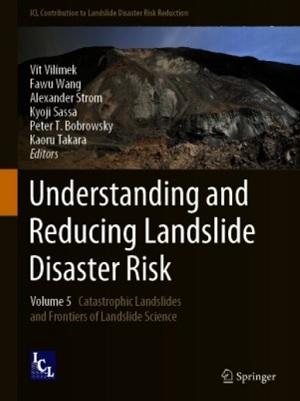Libro: Understanding and Reducing Landslide Disaster Risk

Capítulo: Novel Cosmogenic Datings in Landslide Deposits, San Juan, Argentina
pp 361-370
Autores: Pilar Jeanneret, Stella Maris Moreiras, Silke Merchel, Andreas Gärtner,
Steven Binnie, Maria Julia Orgeira, G. Aumaître, D. Bourlès,
K. Keddadouche
Abstract
High-mountain environments in an active tectonic setting are prone to landsliding. The triggering mechanisms can vary, as these areas are influenced by several pre-conditioning factors coupled with active seismicity and climatic forcings. Understanding the intrinsic and external mechanisms by which these events are influenced would help to establish better constraints onto their timing and periodicity and, eventually, hazard assessment and prediction. Glacially eroded valleys are especially prone as they deeply incise mountain ranges leaving unstable slopes once they retreat. Establishing the timing of such events enables better understanding of the triggering and pre-conditioning factors of landslides. To this aim, 10Be and 26Al cosmogenic age determinations were performed in three landslide deposits in a poorly studied area of San Juan province, all of which are novel to the area. Coupled with remote sensing techniques, field observations and detailed stratigraphic and sedimentological studies, these new large landslides represent a first approach to understand this dynamic environment. The three landslides were categorized as rock avalanches found in the middle and lower reaches of the Blanco River, sourced from the Choiyoi Group with evidence of hydrothermal alteration and including/deforming moraine deposits during their fall. Ages are 20.9 ± 1.4, 10.8 ± 0.7 and 12.8 ± 0.9 ka from the lowermost deposit to the highest, respectively. Even though one sample per deposit is not enough to have statistically significant exposure ages, these values, along with the established chronostratigraphy, allow first order interpretations regarding the links between deglaciation processes and readjustment of the slopes via large landslide events.
